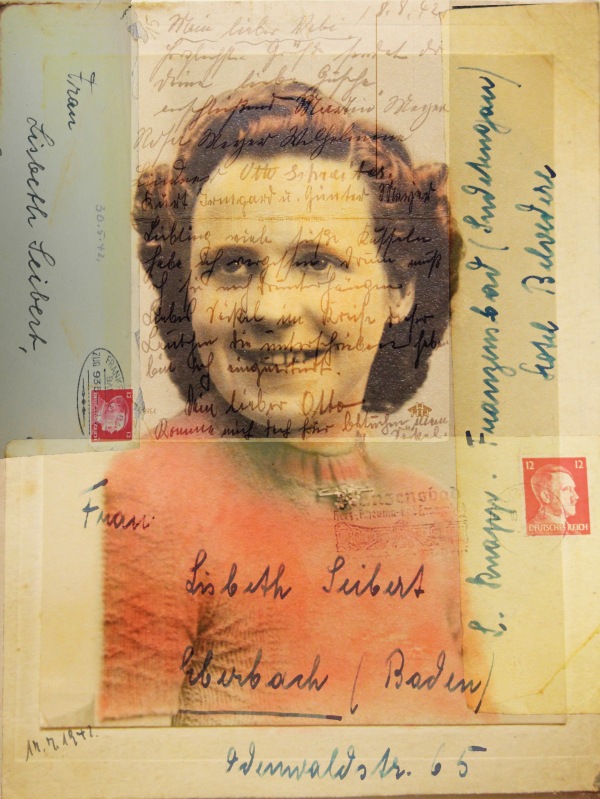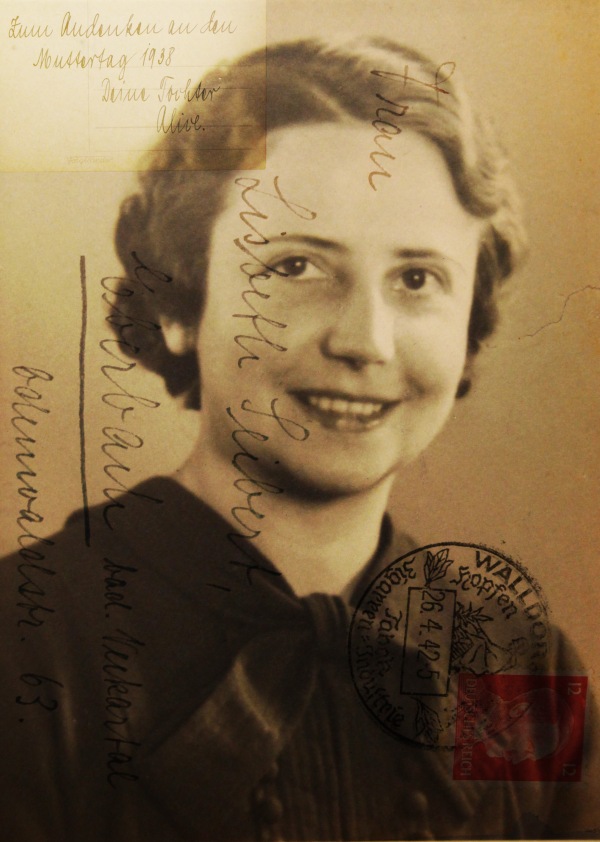“When computers look at photographs they do not see aunt Helena, a sunset or a birthday cake with candles. Here a photograph is calculable information, not different from other bits of calculable information that we quaintly refer to as songs, films and books.” [1]
Both Eijkelboom and Morrissey use performative strategies ( inserting themselves into the picture as actors within a scene ) to expose the fragility of the illusion of unity presented in the family album. Their work also reminds us of a photographic convention – the family album – that has been transformed by digital culture. In the digital era, photographs are more likely to circulate online on photo-sharing sites than to be printed out on paper, so how will the family album of the future be constituted? Nowadays, we are more likely to carry a portable image on a smartphone screen than a paper one in our wallet. In future, it seems likely that we’ll go to the screen rather than to the pages of an album to remember the past. And, more often than not, we’ll go to photo-sharing sites to deposit our archives.
Photo-sharing sites provide a rich resource for artists such as Penelope Umbrico. In her influential work Suns from Flickr. 2006 onwards, she prints out multiple images of sunsets, all found of this one photo-sharing site, similarly to Erik Kessels with 24 HRS in Photos. Umbrico often uses simple modes of presentation to display her ideas ( small machine prints, mounted directly onto the wall, etc ). From these elements, she creates installations, which vary in size from the modest to the monumental.

“This is a project I started when I found 541,795 pictures of sunsets searching the word ‘sunset’ on the Flickr site. I took just the suns from these pictures and made snapshot prints of them. I find it particularly absurd that the sun, the quintessential life giver, constant in our lives, symbol of enlightenment, spirituality, eternity, all things unreachable and ephemeral, omnipotent provider of optimism and Vitamin D… and so ubiquitously photographed, is subsumed to the internet, the most virtual of spaces, equally infinite but within a close electrical circuit. Looking into this cool electronic spaces one finds a virtual window into the natural world.” [2]
As Umbrico’s work makes clear, we as artists can now easily access any publically available archive and, like Umbrico, there are many artist-photographers who are choosing to do so.
British artist Mishka Henner’s Dutch Landscapes series, 2011, manipulates Google Earth images to make visible locations censored by the Dutch authorities. The military authorities use crude imaging techniques to blur or heavily disguise sections of online maps containing military sensitive installations. Henner takes screen grabs of these visually redacted sites and uses captions alongside the image to reveal what have been concealed.

“When Google introduced its free satellite imagery service to the world in 2005, views of our planet only previously accessible to astronauts and surveyors were suddenly available to anyone with an internet connection. Yet the vistas revealed by this technology were not universally embraced. Governments concerned about the sudden visibility of political, economic and military locations exerted considerable influence on suppliers of this imagery to censor sites deemed vital to national security. This form of censorship continues today and techniques vary from country to county with preferred methods generally including use of cloning, blurring, pixelization, and whitening out sites of interest.
Surprisingly, one of the most vociferous of all governments to enforce this form of censorship were the Dutch, hiding hundreds of significant sites including royal palaces, fuel depots and army barracks throughout their relatively small country. The Dutch method of censorship is notable for its stylistic intervention compared to other countries; imposing bold, multi-coloured polygons over sites rather than the subtler and more standard techniques employed in other countries. The result is a landscape occasionally punctuated by sharp aesthetic contrasts between secret sites and the rural and urban environments surrounding them.” [3]
Henner uses the found image to expose the control and censorship exerted by the Dutch authorities. By using the data analysis made possible by search engines, he gives us a hitherto unavailable picture of ourselves.
Similarly, American artist Evan Roth exploits the technology of the internet search engine to produce self-portraits that explore the relationship between identity and technology. In his series Cache Self Portraits, Roth brings together al of the images he looks at online over a given period of days or weeks.
“His recent Cache Self Portraits series deals with the hidden data that passes through our browsers every day. While most of us never see our cache, Roth has altered his computer’s local drive to save ever image that is downloaded, without overwriting. He assembles the thousands of images – everything from website logos to Google map directions and banking information – into a ‘sort of portrait, in this case of me’.” [4]
In displaying every cached image held in his computer during any given period, Roth makes visible the scale of our engagement with online imagery. His sprawling installations, murals and online artwork reflect on the ways in which we continue to process large volumes of data and images in the digital era. Like a cubist collage, hey present a vision of the self as fragmented, complex and constantly in flux.
Research Point:
- Read ‘New Media and Vernacular Photography: Revisiting Flickr’ By Susan Murray in Lister, M. (ed.) ( 2013) The Photographic Image in Digital Culture, Abingdon: Routledge (pp.165-82).
- Read David Chandler’s essay on Mishka Henner’s Dutch Landscapes at
- ‘When is Cliché not a Cliché? Reconsidering Mass-Produced Sunsets’ by Annebella Pollen at
References:
[1] Quote taken from Daniel Rubinstein ‘Digitally Yours: The Body in Contemporary Photography’ 2013.
http://ualresearchonline.arts.ac.uk/6239/1/digitally_yours.pdf ( Accessed 08/03/2018 )
Umbrico, Penelope.
Photograph Suns from Sunsets from Flickr (Partial) 1/23/06, 2006. Penelope Umbrico.
http://www.penelopeumbrico.net/index.php/project/suns/ ( Accessed 08/03/2018 )
[2] http://www.flickr.com/people/sunsfromflickr-umbrico/ ( Accessed 08/03/2018 )
Henner, Mishka.
Photograph Ammunition Depot, Staphorst, Overijssel. Dutch Landscapes, 2011. Mishka Henner.
[3] Quote taken directly from mishkahenner.com
https://mishkahenner.com/Dutch-Landscapes ( Accessed 08/03/2018 )
Roth, Evan.
[4] Quote taken from TheGuardian.com
http://www.theguardian.com/culture/2013/aug/20/evan-roth-badass-hacktivist-artist ( Accessed 08/03/2018 )

























